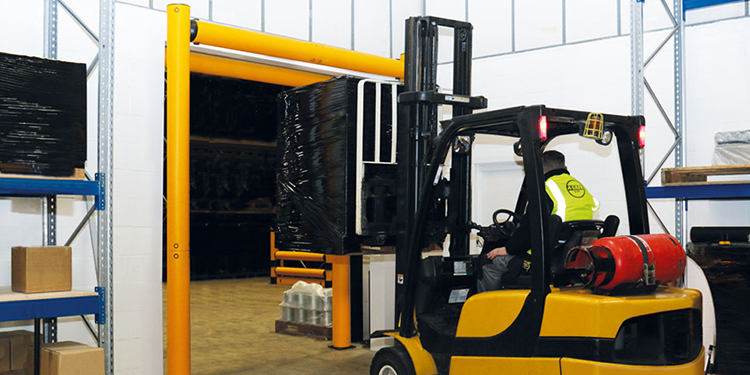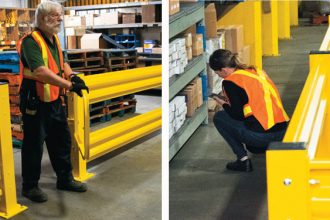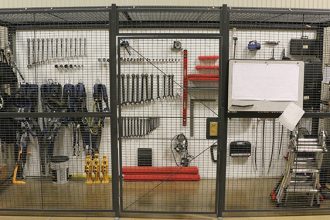Protect Doorframes And Dock Doors With Safety Height Restrictors

Safety height restrictors are used in warehouses, distribution centers, and manufacturing facilities to provide forklift operators with a visual indication of height limits as they maneuver their vehicles and loads through doorways, access points, or dock doors. They are designed to prevent vehicle contact with vulnerable structures such as door frames, doorway edges, door channels, and roller shutters. This physical protection against overhead or glancing impacts from forklifts and their loads prevents costly damage to facility structures, as well as to materials handling equipment and inventory.
Safety height restrictors are also often deployed to protect overhead structures — such as pipe bridges, cable trays, ventilation ducts and gas supply lines — from vehicle and load impacts. Further, they can be used to prevent larger equipment from entering specific areas, limiting access solely to pallet jacks and other compact materials handling equipment.
Comprised of two floor-mounted vertical posts and an overhead horizontal beam, height restrictors are available in common, standard height variations. They can also be fully customized to match specific dimensions. When specifying height restrictors for a facility, it is important to consider the following:
- The width of the opening, as there is a maximum width beyond which the horizontal beam will begin to sag in the middle.
- The amount of available space in front of the structure to be protected, as the height restrictor will need to be positioned so it can absorb an impact without making secondary contact with the structure.
- The maximum speed of the vehicles in use in the area where the height restrictor will be installed.
- The maximum lowered mast height of forklifts operating in proximity.
- The environmental conditions where the system will be installed (ambient-temperature, cold storage, freezer). Temperature can influence the choice of material used.
- The type of material desired. Height restrictor systems can be constructed of polymer or steel.
- The condition of the floor and its ability to support the height restrictor structure.
As an alternative to using a floor-mounted height restrictor to physically stop vehicles, it is also possible to suspend a horizontal bar from overhead to indicate clearance. More advanced models of overhead-mounted height restrictors feature intelligent sensors that detect when a vehicle makes contact with the bar, then emit an audible alarm to alert the operator of contact and prompting them to stop and change direction.
Looking for more information about installing height restrictors and other protective barriers in your facility? The members of the Protective Guarding Manufacturers Association (ProGMA) are available for guidance and recommendations.



